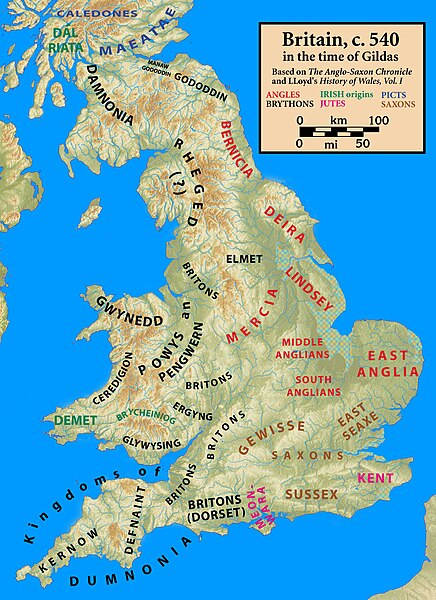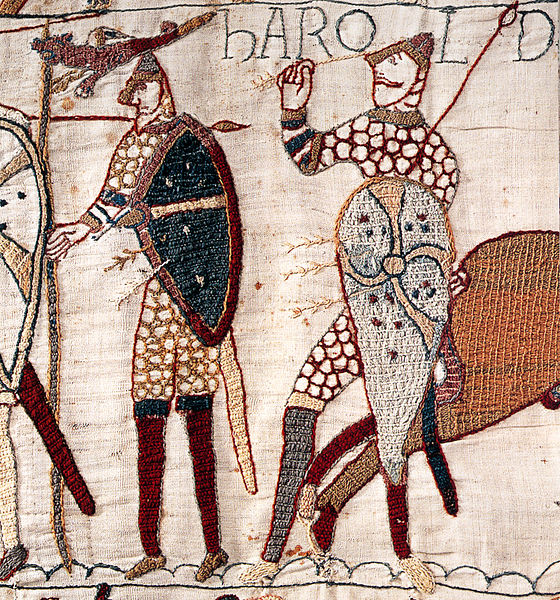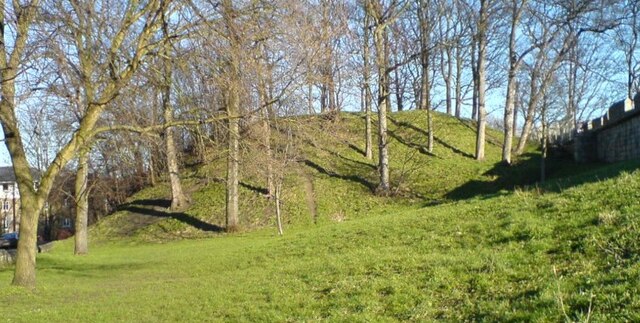History of Anglo-Saxon England
Anglo-Saxon England or Early Medieval England, existing from the 5th to the 11th centuries from soon after the end of Roman Britain until the Norman Conquest in 1066, consisted of various Anglo-Saxon kingdoms until 927, when it was united as the Kingdom of England by King Æthelstan. It became part of the short-lived North Sea Empire of Cnut, a personal union between England, Denmark and Norway in the 11th century.
Britain around the year 540. Anglo-Saxon kingdoms' names are coloured red. Britonnic kingdoms' names are coloured black.
Escomb Church, a restored 7th-century Anglo-Saxon church. Church architecture and artefacts provide a useful source of historical information.
Whitby Abbey
The walled defence round a burgh. Alfred's capital, Winchester. Saxon and medieval work on Roman foundations.
The Norman Conquest was the 11th-century invasion and occupation of England by an army made up of thousands of Norman, French, Flemish, and Breton troops, all led by the Duke of Normandy, later styled William the Conqueror.
13th-century depiction of Rollo (top) and his descendants William I Longsword and Richard I of Normandy
Arrival in England scene from the Bayeux Tapestry, depicting ships grounding and horses landing
Likely depiction of Harold's death from the Bayeux Tapestry
The remains of Baile Hill, the second motte-and-bailey castle built by William the Conqueror in York, on the west bank of the River Ouse








